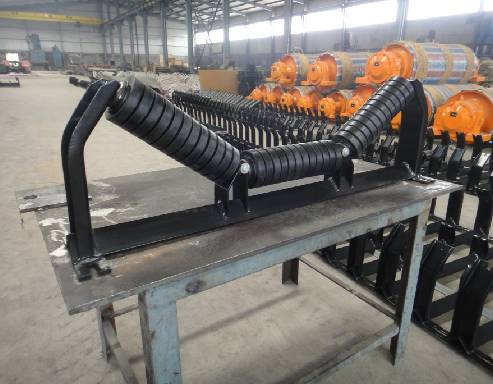 Afrikaans
Afrikaans  Albanian
Albanian  Amharic
Amharic  Arabic
Arabic  Armenian
Armenian  Azerbaijani
Azerbaijani  Basque
Basque  Belarusian
Belarusian  Bengali
Bengali  Bosnian
Bosnian  Bulgarian
Bulgarian  Catalan
Catalan  Cebuano
Cebuano  Corsican
Corsican  Croatian
Croatian  Czech
Czech  Danish
Danish  Dutch
Dutch  English
English  Esperanto
Esperanto  Estonian
Estonian  Finnish
Finnish  French
French  Frisian
Frisian  Galician
Galician  Georgian
Georgian  German
German  Greek
Greek  Gujarati
Gujarati  Haitian Creole
Haitian Creole  hausa
hausa  hawaiian
hawaiian  Hebrew
Hebrew  Hindi
Hindi  Miao
Miao  Hungarian
Hungarian  Icelandic
Icelandic  igbo
igbo  Indonesian
Indonesian  irish
irish  Italian
Italian  Japanese
Japanese  Javanese
Javanese  Kannada
Kannada  kazakh
kazakh  Khmer
Khmer  Rwandese
Rwandese  Korean
Korean  Kurdish
Kurdish  Kyrgyz
Kyrgyz  Lao
Lao  Latin
Latin  Latvian
Latvian  Lithuanian
Lithuanian  Luxembourgish
Luxembourgish  Macedonian
Macedonian  Malgashi
Malgashi  Malay
Malay  Malayalam
Malayalam  Maltese
Maltese  Maori
Maori  Marathi
Marathi  Mongolian
Mongolian  Myanmar
Myanmar  Nepali
Nepali  Norwegian
Norwegian  Norwegian
Norwegian  Occitan
Occitan  Pashto
Pashto  Persian
Persian  Polish
Polish  Portuguese
Portuguese  Punjabi
Punjabi  Romanian
Romanian  Russian
Russian  Samoan
Samoan  Scottish Gaelic
Scottish Gaelic  Serbian
Serbian  Sesotho
Sesotho  Shona
Shona  Sindhi
Sindhi  Sinhala
Sinhala  Slovak
Slovak  Slovenian
Slovenian  Somali
Somali  Spanish
Spanish  Sundanese
Sundanese  Swahili
Swahili  Swedish
Swedish  Tagalog
Tagalog  Tajik
Tajik  Tamil
Tamil  Tatar
Tatar  Telugu
Telugu  Thai
Thai  Turkish
Turkish  Turkmen
Turkmen  Ukrainian
Ukrainian  Urdu
Urdu  Uighur
Uighur  Uzbek
Uzbek  Vietnamese
Vietnamese  Welsh
Welsh  Bantu
Bantu  Yiddish
Yiddish  Yoruba
Yoruba  Zulu
Zulu Understanding Carry Idler and Its Impact on Mechanical Systems Efficiency
Understanding the Role of Carry Idler in Modern Engineering
In the realm of modern engineering, the concept of carry idler plays a crucial role, particularly in the design and functionality of various mechanical systems. Understanding this component can lend insight into its significance in enhancing operational efficiency, durability, and precision. This article delves into the definition of carry idler, its applications, and the broader implications of its role within different systems.
Definition of Carry Idler
A carry idler, often referred to simply as an idler, is a critical component in conveyor systems and similar machinery. It serves as a support structure designed to maintain the proper tension and alignment of a conveyor belt or chain. By providing a guiding path, carry idlers help in the effective transfer of materials or goods, ensuring smooth operational flow. They minimize friction and wear on both the conveyor belt and the surrounding structures, leading to a more efficient system.
Applications of Carry Idler
Carry idlers are widely utilized across various industries, ranging from manufacturing and mining to food processing and logistics. In the mining sector, for instance, carry idlers are essential for transporting heavy materials over long distances. Without these components, conveyor systems could suffer from frequent breakdowns due to misalignment and excessive wear.
In the food processing industry, hygiene and safety are top priorities. Carry idlers designed with stainless steel and easy-to-clean surfaces meet these rigorous standards while ensuring the smooth operation of conveyor systems. This contributes to maintaining product integrity throughout the production line.
Moreover, in logistics and warehousing, efficient material handling is paramount. Carry idlers enable the rapid movement of packages and products, optimizing workflow and reducing bottlenecks. Their role in facilitating seamless transitions between different stages of the supply chain cannot be overstated.
carry idler

Advantages of Using Carry Idlers
1. Reduced Friction and Wear By supporting the conveyor belt and reducing direct contact with stationary components, carry idlers minimize friction, leading to less wear and tear. This not only extends the lifespan of the conveyor system but also reduces maintenance costs.
2. Enhanced Stability Carry idlers play a vital role in maintaining the alignment of conveyor belts, ensuring that materials are transported smoothly and efficiently. A stable system prevents misalignment that could disrupt operations.
3. Improved Load Distribution In systems where heavy loads are transported, carry idlers help evenly distribute weight across the conveyor belt. This is particularly important in preventing belt sagging and maintaining consistent operation.
4. Adaptability Carry idlers are available in various designs, sizes, and materials, allowing for customization based on specific operational needs. This adaptability ensures that they can be implemented in diverse environments and applications.
Conclusion
The carry idler may seem like a small component in the grand scheme of engineering design, but its impact is profound. By facilitating efficient material handling, enhancing equipment longevity, and providing stability, carry idlers are indispensable in modern industrial operations. As industries continue to evolve and demand for efficiency increases, the importance of understanding and optimizing each component, including the carry idler, becomes even more critical.
In conclusion, whether in heavy industries, food safety applications, or warehousing logistics, the carry idler is a testament to the intricate design and functionality that characterize contemporary mechanical systems. Its seemingly simple role in maintaining the movement of materials hides a complexity that bears significant implications for productivity, cost efficiency, and operational effectiveness. As engineers and industry professionals continue to innovate, the carry idler will undoubtedly remain a key feature in the ongoing pursuit of excellence in mechanical design.
-
Revolutionizing Conveyor Reliability with Advanced Rubber Lagging PulleysNewsJul.22,2025
-
Powering Precision and Durability with Expert Manufacturers of Conveyor ComponentsNewsJul.22,2025
-
Optimizing Conveyor Systems with Advanced Conveyor AccessoriesNewsJul.22,2025
-
Maximize Conveyor Efficiency with Quality Conveyor Idler PulleysNewsJul.22,2025
-
Future-Proof Your Conveyor System with High-Performance Polyurethane RollerNewsJul.22,2025
-
Driving Efficiency Forward with Quality Idlers and RollersNewsJul.22,2025





























